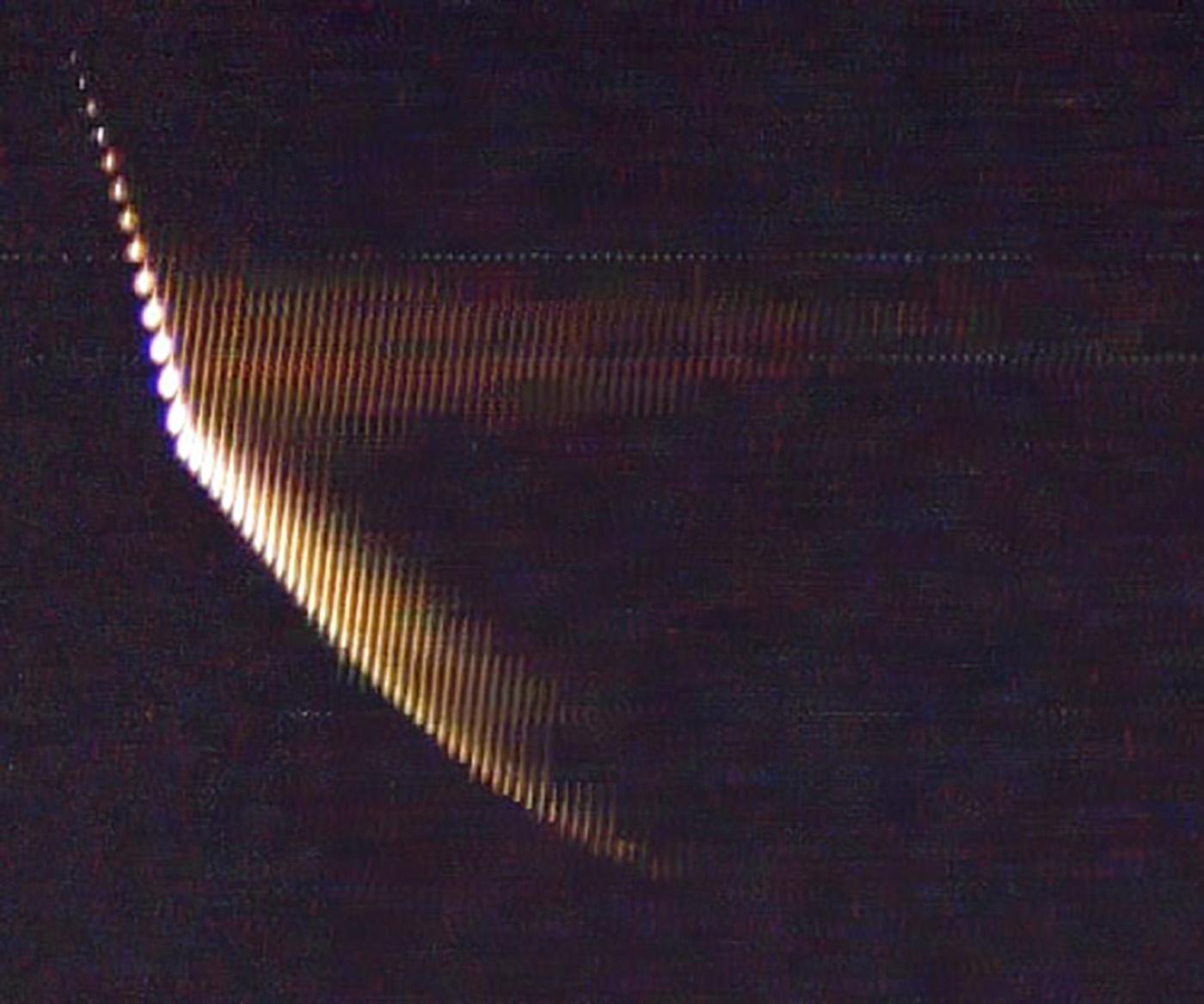
MOUNTAIN VIEW – The weak display of last month’s Camelopardalids meteor shower, the result of the close passage of comet 209P/LINEAR, may have disappointed backyard observers, but this never-before-seen shower now has scientists excited. An analysis of airborne and ground-based observations published in the latest issue of the Journal of the International Meteor Organization finds that this comet's dust was unusually fragile, and had fallen apart into undersized meteors that were largely invisible.
“Some mechanism was at work that efficiently fragmented the larger meteoroids,” says Peter Jenniskens, a meteor astronomer with the SETI Institute. Ten years ago, Jenniskens, together with colleague Esko Lyytinen, first predicted that a new shower would appear on May 24.
On that evening, Jenniskens’ research team took to the skies in a Beechcraft King Air 90 aircraft, a flight sponsored by the SETI Institute, and in little over two hours detected 21 Camelopardalids, predominantly faint meteors.
“Our best meteor was no more luminous than the star Vega”, says Jenniskens, “but it gave us a clue as to why there were few bright ones: It was so fragile that the meteoroid suddenly dispersed into a cloud of dust at the end of its trajectory."
Similar behavior was displayed during the 1933 and 1946 Draconid meteor storms, a consequence of close encounters with comet 21P/Giacobinni-Zinner. That comet was hyper-active, and Jenniskens suspects that the ejected dust grains were still embedded with ice. The larger grains would have been destroyed when the grains warmed up and the ice was lost.
Comet 209P/Linear, however, was a weakly active comet, not known for ejecting ice-laden dust.
“We are not sure yet what destroyed the larger meteoroids in this case,” Jenniskens says. “The meteoroids may have simply been too frail to survive ejection, or the larger meteoroids could have been lost in the many years since they were ejected.”
One explanation for the lack of large meteoroids is that they failed to survive the harsh conditions of space. The cometary dust encountered by Earth during May was more than a century old.
“We may have been just a few centuries late in catching a good show,” says Jenniskens. “The shower we saw was just a faint memory of what once was there.”
- Paper at: http://meteor.seti.org
- Reference: P. Jenniskens, 2014. "Camelopardalids (IAU#451) from comet 209P/LINEAR", JIMO 42, 98-105.
- International Meteor Organization: http://www.imo.net/imo/wgn
About the SETI Institute
Founded in 1984, the SETI Institute is a non-profit, multi-disciplinary research and education organization whose mission is to lead humanity’s quest to understand the origins and prevalence of life and intelligence in the Universe and to share that knowledge with the world. Our research encompasses the physical and biological sciences and leverages expertise in data analytics, machine learning and advanced signal detection technologies. The SETI Institute is a distinguished research partner for industry, academia and government agencies, including NASA and NSF.
Contact information
Peter Jenniskens
SETI Institute
E-mail: petrus.m.jenniskens@nasa.gov
Tel: +1 650-810-0216





